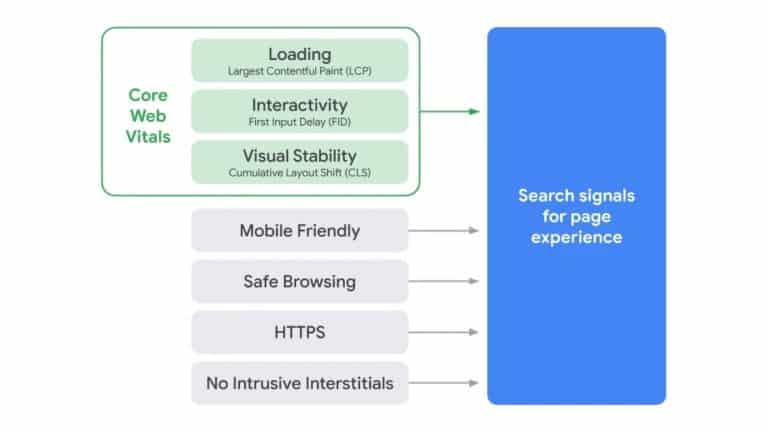there is news from google in two respects. firstly, a new ranking signal is being introduced with page experience. but what is really exciting is that for the first time google is announcing future changes to ranking factors in advance, instead of presenting webmasters and seos with a fait accompli.
It is quite reasonable to conclude that the upcoming changes will have a very significant impact on future rankings. companies are therefore well advised to prepare in good time.
What is the page experience?
in google's own words:
„Page Experience measures aspects of how users perceive the experience of interacting with a web page. Optimizing for these factors makes the web more appealing to users across all web browsers and interfaces, and helps pages align with user expectations on mobile devices. We believe this will contribute to business success on the web by allowing users to engage more and transact with less friction.„
google
This will change in concrete terms:
for years, google has been preaching that pagespeed (page speed) is an essential factor in the ranking. this factor is now being refined and upgraded by new metrics, a combination of page speed and user experience. at the beginning of may, google published information on web vitals and describes these as key factors of page experience and thus as the core of the new ranking factors.
in addition to the three new individual metrics as web vitals indicators, other signals will also be included:
- is the site optimized for mobile devices (cell phone, tablet)?
- is the connection to the website protected (https)?
- is the actual content visible or do intrusive pop-ups prevent use?
- does the page contain malicious code or pishing elements?

the value of the new ranking factor is calculated from the new metrics, supplemented by the four other individual signals.
the new web vitals in detail:
- LCP - Largest Contentful Paint - This metric shows how long it takes for the largest content element on a page to load.
- FID - First Input Delay - this metric describes the time that elapses between the user's first interaction on the loaded page and the browser's response.
- CLS - Cumulative Layout Shift - this is about the visual stability of a page, to what extent do unexpected layout changes occur.
how do i measure the new web vitals metrics?
at the same time as announcing the new metrics, google also revised all the main tools for measuring website performance and added the new metrics.
- Webpagetest.org
- PageSpeed Insights
- Web Vitals Chrome extension
- Search Console
- Lighthouse in dev-tools
- DevTools Performance Panel (Experience section)
- Chrome user experience API
what's new is that for the first time, google is also using these metrics to provide concrete information on what is classified as good, what can be improved and what is classified as 'failing'. this enables simple and very transparent monitoring of the site and the work of the responsible developers / web designers.
the speed report in the search console is an excellent option for analyzing the entire website. however, it requires a minimum amount of traffic on the website. if no values are (yet) displayed here, we recommend analyzing all individual pages in webpagetest.org. in addition to the new Web Vitals, we can also find a lot more information about the performance of a website here.
for a quick first impression, the chrome extension is quite suitable. simply go to the desired page and observe whether the icon is displayed in red, yellow or green.
more web vitals
the new core web vitals are the key metrics for understanding and delivering a great user experience. however, there are other metrics that are no less important. these are often complementary to diagnose a particular problem.
Time to First Byte (TTFB) and First Contentful Paint (FCP) are examples of this and very useful for diagnosing slow server response times or render blocking resources.
How important is all this now?
google makes it very clear that the content of a website is still the most important ranking criterion. this means that user experience signals are not rated higher than content-related factors:
"While all components of the page experience are important, we will prioritize the pages with the best information overall, even if some aspects of the page experience are subpar. A good page experience does not require the content to be great and relevant. However, in cases where there are multiple pages with similar content, page experience becomes much more important for search visibility."
google
You want to know exactly?
as already described in several articles, the following points are fixed prerequisites for a successful website:
- flawlessness
- performance (speed)
- usability (especially mobile)
This will not change as a result of the new page experience, but the positive aspect is that it will become measurable.
an audit of your website gives you an up-to-date overview of whether and in what form adjustments are necessary in order to remain digitally successful in the future.
you can find more information about the free webaudit here:
go into even more detail?
another very well written guide by seobility about the new core web vitals. you can find it here:
Core Web Vitals: Everything you need to know about Google's latest ranking factor







